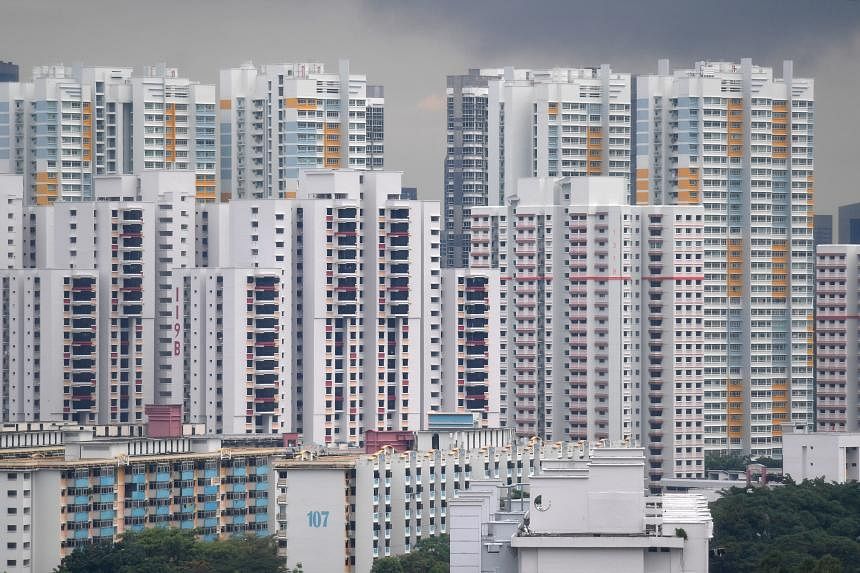SINGAPORE – In his National Day message on Aug 8, Prime Minister Lee Hsien Loong said he would outline at the National Day Rally on Aug 20 how the Government will adjust public housing schemes. This is to ensure flats remain accessible and affordable for Singaporeans of all income groups.
Housing schemes must also remain fair and inclusive for all, he added.
PM Lee said he will also announce extra help for some older workers who have not built up enough Central Provident Fund (CPF) savings for retirement.
Here is what has been announced or rolled out so far on the public housing front.
Review of HDB town classification
In his message, PM Lee noted that there are fewer undeveloped sites left to build new estates.
Existing non-mature estates are also steadily maturing with improving transport links and amenities, he said, adding that more new flats will be built in existing estates like Dawson.
In 1992, estates were categorised into mature and non-mature based on their physical attributes, such as availability of land, transportation connectivity and amenities.
Mature estates had limited land available for new HDB flats but were more well connected, whereas non-mature estates had more land but were not as developed.
Flat buyers often use the classification to form a top-line impression of what to expect in terms of pricing and an area’s amenities.
But 30 years on, it is time to review the estate classification framework to “keep pace with the times”, National Development Minister Desmond Lee said during a Forward Singapore public engagement session in November 2022.
Today, the gap between mature and non-mature estates is fast closing in terms of connectivity, convenience, amenities, quality and diversity of housing, said Mr Lee.
He cited Hougang, Sengkang, Jurong East and Jurong West, including Jurong Lake District, all of which are currently classified as non-mature estates.
Mr Lee had previously outlined three main considerations guiding the review.
First, whether estates need to be classified at all.
Second, that any classification must better reflect the realities of today’s estates.
Third, the policy changes that will follow – whether there are new classifications or no classifications at all – to ensure flats remain accessible and affordable to a wide spectrum of Singaporeans.
Currently, there are 27 HDB estates and towns, of which 15 are categorised as mature and 12 as non-mature.
The mature towns and estates are Ang Mo Kio, Bedok, Bishan, Bukit Merah, Bukit Timah, Central Area, Clementi, Geylang, Kallang/Whampoa, Marine Parade, Pasir Ris, Queenstown, Serangoon, Tampines and Toa Payoh.
The non-mature towns and estates are Bukit Batok, Bukit Panjang, Choa Chu Kang, Hougang, Jurong East, Jurong West, Punggol, Sembawang, Sengkang, Tengah, Woodlands and Yishun.
Prime Location Public Housing (PLH) model to curb ‘lottery effect’
Introduced in November 2021, the PLH model was developed after an almost year-long engagement with the public amid growing concerns over home affordability as HDB resale flat prices soared while the number of million-dollar HDB flats hit a record high.
The model aims to keep new flats in prime locations affordable, accessible and inclusive for Singaporeans, both at the initial purchase and when these units are resold on the open market.
It is meant to curb the “lottery effect” for owners, through stricter buying and selling conditions such as a 10-year minimum occupation period, up from the standard five-year period, and restrictions on the pool of resale buyers.
In December, Mr Lee said just four towns will be considered prime locations for Housing Board public housing projects for now – the central area, Kallang/Whampoa, Queenstown and Bukit Merah.
Within these four towns, HDB will decide if a Build-To-Order (BTO) project falls under the PLH model, depending on the market value of the site and its other attributes such as proximity to amenities.
Twelve BTO projects have come under the PLH model since the first was launched in Rochor in November 2021.
New priority group and increased grants
First-time-owner families with Singaporean children aged 18 and below as well as married couples aged 40 and below will get more support when they apply for a new HDB flat, starting from the BTO sales exercise around end-September or early October 2023.
Up to 40 per cent of the BTO flat supply will be reserved for applicants under the First-Timer (Parents and Married Couples) category – an increase from 30 per cent now.
Up to 60 per cent of Sale of Balance Flats (SBF) units will be set aside for this group as well, an increase from the current 50 per cent.
In addition, those under the new category will get first priority when applying for four-room or smaller BTO flats in non-mature estates.
To qualify for this priority category, families must not have owned or sold a residential property before, or had a chance to book a flat in the past five years before their application.
There will be tighter rules for first-timer applicants who do not select a BTO flat when invited to do so as well, starting from the upcoming BTO exercise.
Successful applicants must pick a unit or lose their first-timer priority in their subsequent applications.
Since February, first-timers buying HDB resale flats can tap an increased housing grant of up to $80,000.
Ramping up new flat supply
To meet housing demand, up to 100,000 flats are being launched from 2021 to 2025. Of these, about 23,000 BTO flats will be launched in 2023, similar to 2022.
Mr Lee has said that HDB is building aggressively and on a very large scale, with almost 100 BTO projects currently ongoing islandwide, as at March. This will increase to more than 150 concurrent BTO projects by 2025.
From 2024, more BTO flats with shorter waiting times of under three years will be launched. The aim is to roll out 2,000 to 3,000 of such flats each year by 2025, similar to pre-pandemic levels.


